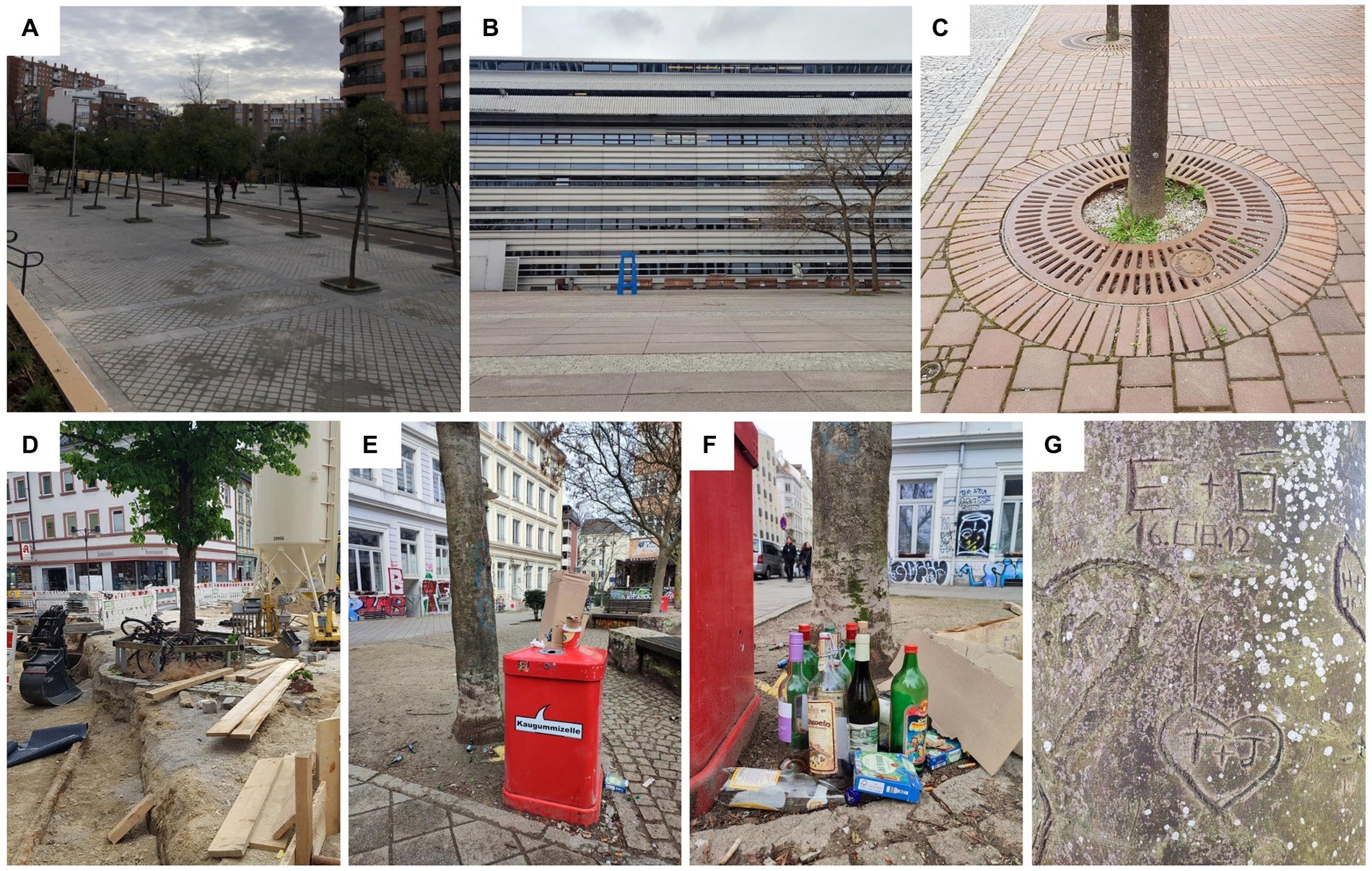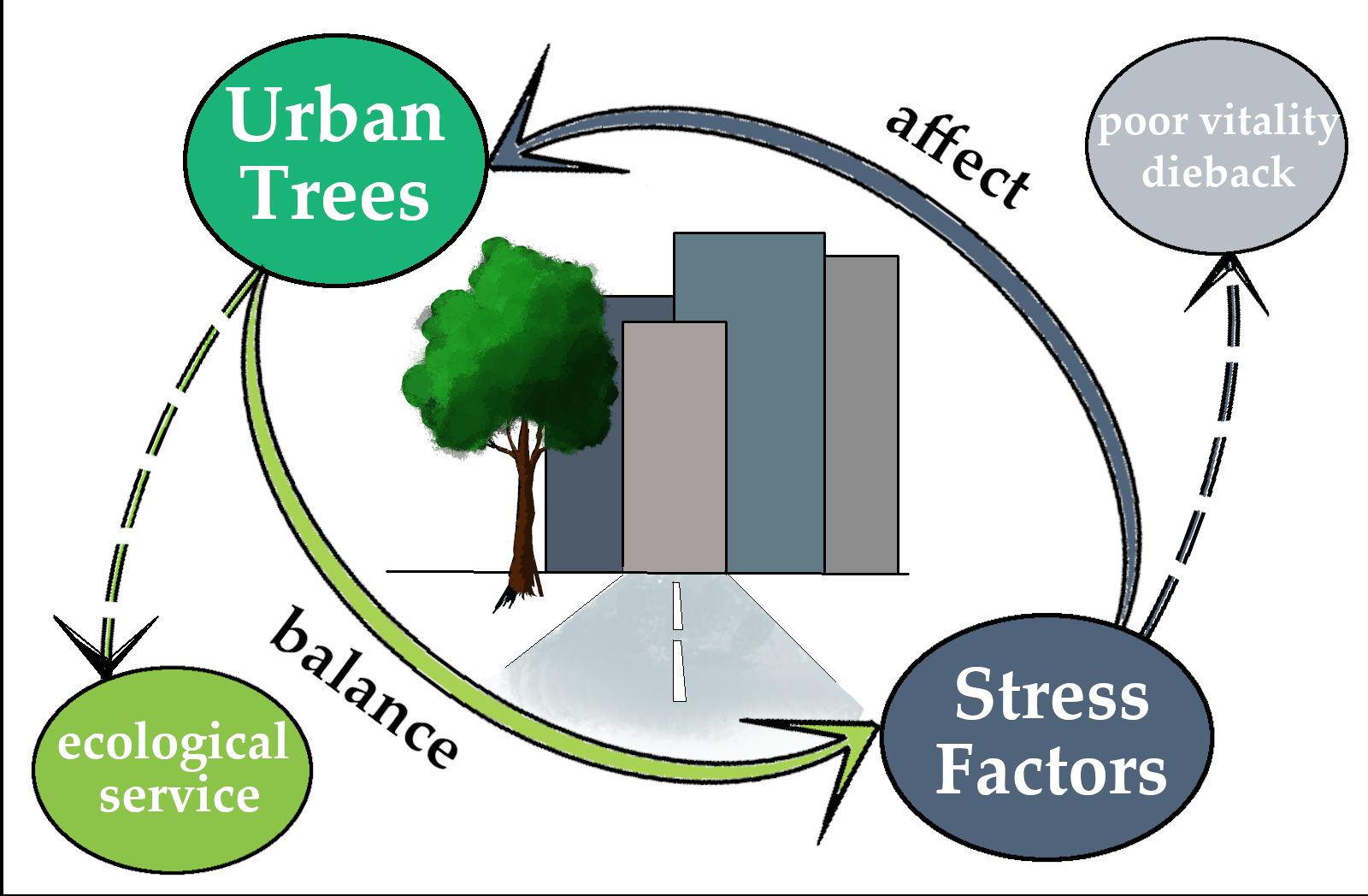Biotic and Abiotic Challenges of Urban Trees and Forests
Overview
Urban trees and forest ecosystems are subject to a wide range of biotic (living) and abiotic (non-living) stress factors that influence their health, growth, and longevity. These challenges play a major role in shaping the resilience of green infrastructure, biodiversity, and ecosystem services in both natural and urban environments.

Biotic Challenges
Biotic stressors are caused by living organisms that negatively affect tree health. Common examples include:
-
Fungal diseases such as stem cankers, root rots, and leaf blights.
-
Bacterial infections leading to wilt, leaf scorch, and decline symptoms.
-
Insect pests, including borers, defoliators, and sap-sucking insects.
-
Parasitic plants, which compete with trees for resources.
These stressors can weaken trees, reduce growth, and increase mortality rates, particularly when combined with environmental stress.
Abiotic Challenges
Abiotic stressors result from environmental or human-induced factors. Key examples include:
-
Drought and heat stress, exacerbated by climate change.
-
Soil-related problems such as compaction, salinity, and nutrient imbalance.
-
Air pollution, which can damage foliage and alter physiological processes.
-
Mechanical damage, including injuries from construction, pruning, or vandalism.
Abiotic factors often predispose trees to secondary infections and pest attacks, making them more vulnerable to biotic stress.

Diagnosis and Management
Accurate diagnosis is essential for distinguishing between biotic and abiotic causes of decline. Integrated management strategies may include:
-
Regular monitoring and early detection programs.
-
Use of resistant tree species and cultivars.
-
Sustainable soil and water management practices.
-
Preventive measures to reduce pest and pathogen spread.
-
Urban planning that minimizes tree stress and physical damage.
Significance
Understanding biotic and abiotic challenges is critical for maintaining tree health, ecosystem resilience, and urban sustainability. Effective management can enhance biodiversity, mitigate climate impacts, and improve the quality of life in both urban and rural communities.
References
-
Agrios, G. N. (2005). Plant Pathology (5th ed.). Elsevier Academic Press.
-
Manion, P. D. (1991). Tree Disease Concepts. Prentice Hall.
-
Paoletti, E., & Manning, W. J. (2007). Toward a biologically significant and usable standard for ozone that will also protect plants. Environmental Pollution, 150(1), 85–95.
-
Nowak, D. J., & Dwyer, J. F. (2007). Understanding the benefits and costs of urban forest ecosystems. In J. E. Kuser (Ed.), Urban and Community Forestry in the Northeast (pp. 25–46). Springer.
-
Dobbertin, M. (2005). Tree growth as indicator of tree vitality and of tree reaction to environmental stress: A review. European Journal of Forest Research, 124(4), 319–333.
-
FAO. (2020). Urban and Peri-urban Forestry. Food and Agriculture Organization of the United Nations.